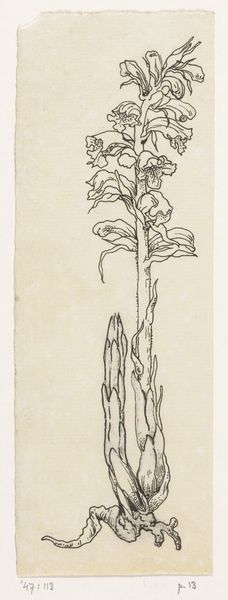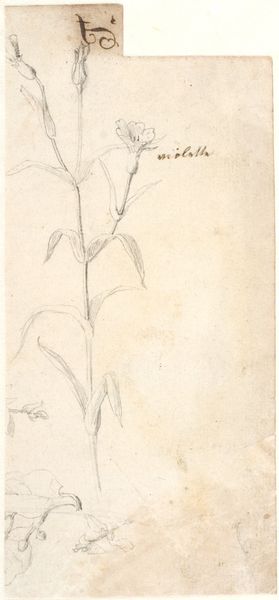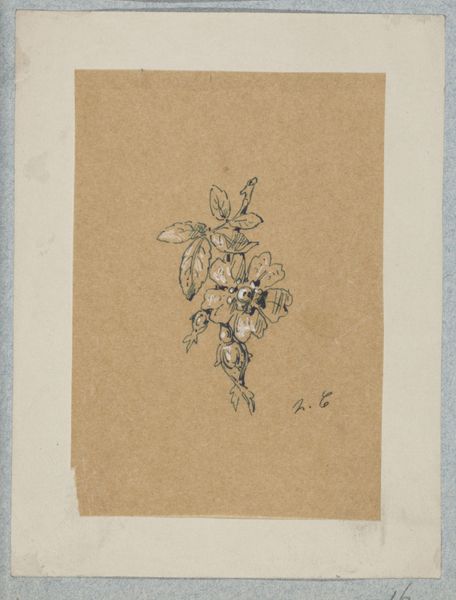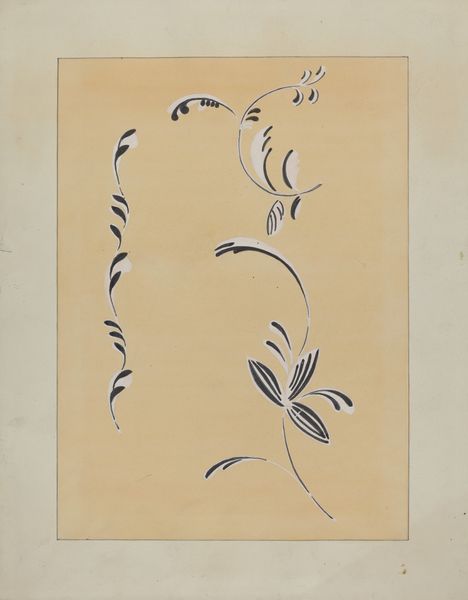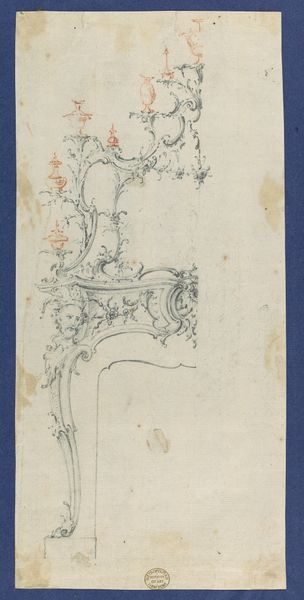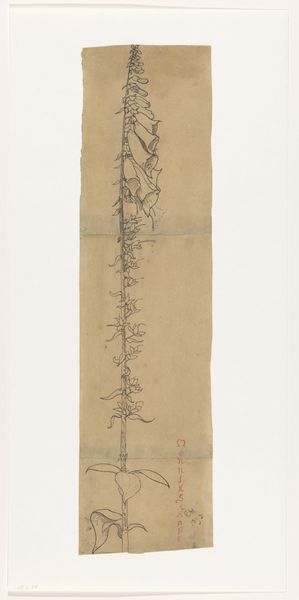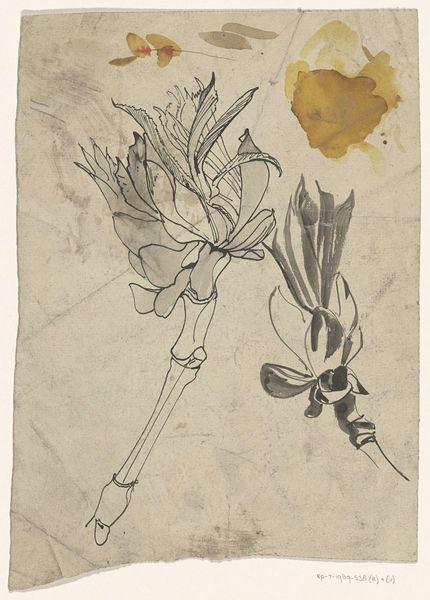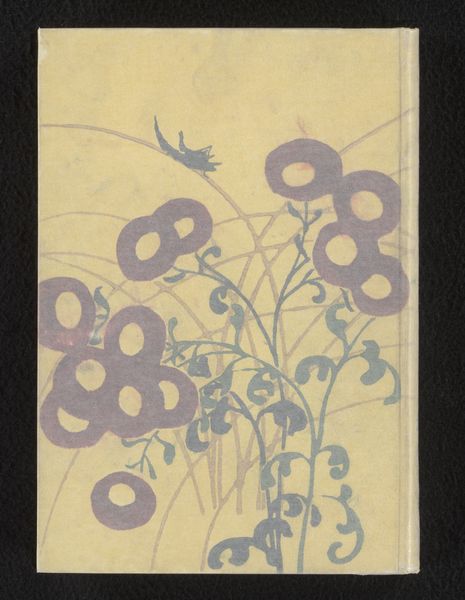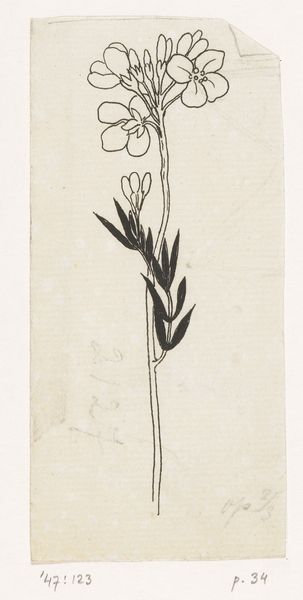
drawing, paper, ink
#
drawing
#
organic
#
paper
#
ink
#
plant
#
line
Dimensions: height 485 mm, width 245 mm
Copyright: Rijks Museum: Open Domain
Editor: Here we have Richard Nicolaüs Roland Holst’s "Bloeiende vetplant," a succulent in bloom rendered in ink on paper, sometime between 1878 and 1938. I'm struck by how delicately the artist captures the plant's form with such simple lines. What's your interpretation of this piece? Curator: Well, considering the period in which this was created, and Holst’s social circles, this drawing can be read through the lens of artistic autonomy. The late 19th and early 20th centuries saw debates around the purpose of art; should art serve the state, religious institutions, or social causes? Or could it exist purely for aesthetic contemplation? Editor: So, this drawing of a plant is a statement? Curator: Perhaps. By choosing such an unassuming subject – a succulent – Holst might be subtly rejecting grand, historical themes. He's focusing on the beauty and detail of the natural world. Does this connect to the Dutch tradition of botanical illustration perhaps? Is it a purely objective rendering or is Holst also imbuing the succulent with meaning? Think about how art academies often trained students in botanical illustration. What's being taught and what's being left out when you focus only on representing external forms in a 'scientific' way? Editor: I never thought of it that way, focusing on such an overlooked part of nature to challenge artistic conventions of the time. It makes me appreciate the work even more. Curator: Right? This drawing reflects the politics of the gaze itself, inviting us to question what we deem worthy of artistic representation and who decides what matters.
Comments
No comments
Be the first to comment and join the conversation on the ultimate creative platform.
